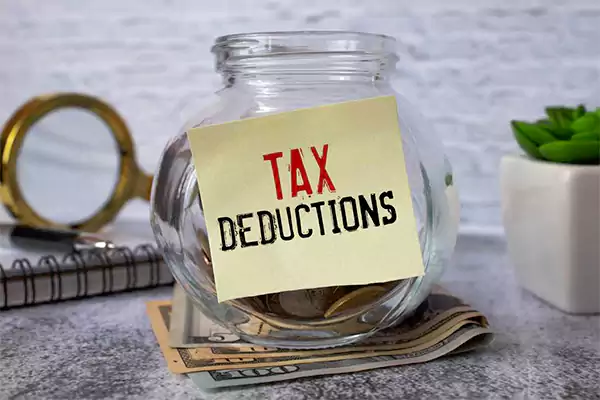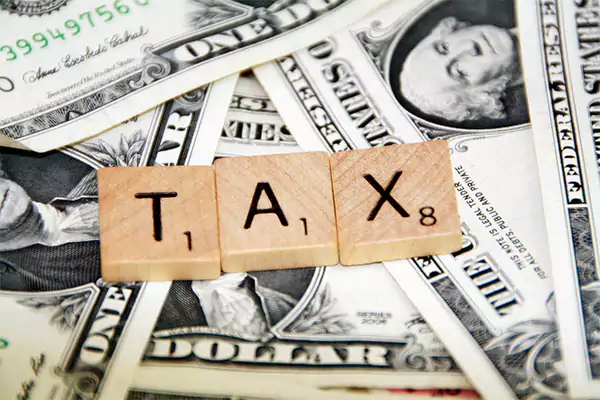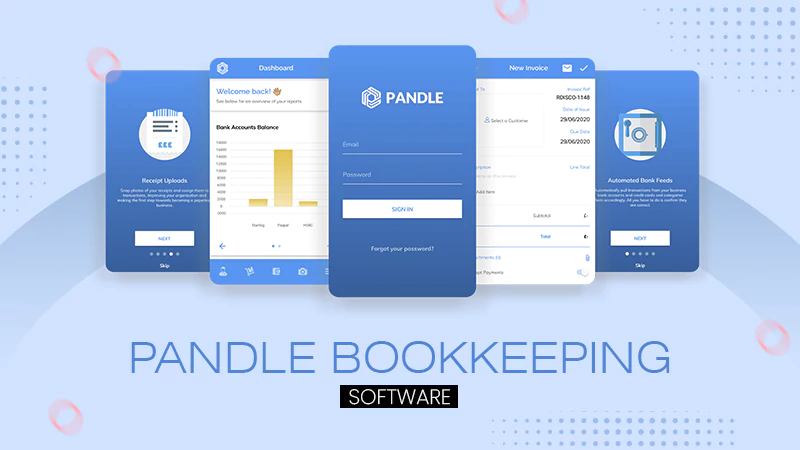A tax write-off is a technique by which you can reduce certain expenses from your total income, which lowers the amount you pay in taxes.
Filing for taxes is a lengthy and overwhelming process, especially when you do not know the right tools and end up giving away your hard-earned money. Well, knowing how to legally shrink your total taxable income with deductibles is the way to balance your finances, and that’s where what is a tax write off comes in.
In simplest form, tax write off meaning is to reduce the portion of your income that can be counted as deductions, like business expenses and charity donations. To help you figure out what can be claimed under IRS law, we have explained how a deductible works and how to maximize savings in this blog. So, read till the end to learn more!
What is a Tax Write Off?

A tax write-off or tax deduction is an expense that the IRS allows you to deduct from your total income. It is simply a legal reduction of your taxable income in the form of expenses that are ordinary, necessary, and related to your personal or business financial life.
So with a tax write-off, you are not taking back the money, but are reducing the amount of tax you pay to the government. For individuals, examples of write-offs can be mortgage interest or charity donations. For businesses and freelancers, it can be the expenses required to conduct the business, such as software, home office equipment, and more.
The tax write-offs are to guarantee that you are taxed only on the amount of money available as profit, and not the amount of money you need to live or operate a business.
How do Tax Deductions Work?

According to the IRS, the credits and deductions for individuals can be calculated using the simple tax write-offs formula, i.e.,
Taxable income = Total income generated — Allowable deductions
This reduced amount is then subject to your tax bracket, which significantly lowers the taxable income. The higher the bracket you fall in, the better your deductions will be. As an example, a person in the 32% tax bracket will save more on the same amount of $1000 deduction compared to a person in the 12% tax bracket.
The majority of the write-offs need to be documented with receipts, invoices, and other documents to calculate the actual costs. Write-offs are used when you are filing your tax returns, and depending on your status as a tax filer, you can claim the standard deductions, or you can claim the write-offs itemized to secure a larger tax deduction.
To put it simply, write-offs are a technique that will move your financial image to your advantage by lowering the amount of income you will be taxed on.
Tax Write-Off Vs Tax Credit: What’s the Difference?
While both the methods, tax-write offs and tax credits, serve the same goal of saving money on taxes, the approach and functionality are totally different. Let’s understand both the terms here:
So, what are tax write-offs?
Write-offs generally minimize the taxable income. When you have a taxable income of $70,000 with a deduction of $15,000, it will appear that your total earnings are $55,000.
The savings you make will be proportional to your tax bracket.
What’s a tax credit?
The tax credit, on the other hand, will save you dollar for dollar on your tax bill.
Let’s say you are paying taxes of $3,000, and you have a credit of $1,000, then you will pay $2,000.
Credits significantly reduce the amount as they directly impact the actual tax bill, whereas deductions only reduce income prior to taxation.
So, to memorize: deductions lower the total taxable income and credits lower the tax dues to the government.
Types of Write Off Tax Deductible
There are two types of deductions that every taxpayer can decide to claim: standard deductions and itemized deductions.
Standard Tax Deductions
The standard tax deductions are an amount that has been fixed by the IRS that you can deduct from gross income, and no one will inquire about it. It is easy, quick, and does not involve receipts. Most taxpayers prefer this method, since it grows nearly every year as inflation rises.
Itemized Deductions
The IRS has specified certain types of financial transactions under the itemized deductions. These should be documented and should not exceed the amount of standard deductions.
These are considered itemized deductions:
- Mortgage interest payments
- High medical expenses
- State and local taxes
- Charitable contributions
- Casualty and theft losses
Individuals with high levels of deductibles or high-income earners should go for itemized deductions while filing. The rate of taxation is a very personal matter, since the right method will produce the greatest tax reduction.
Who can File for a Write-Off Tax Deductible?
Business owners are not the only ones eligible to write off, but employees and freelancers can claim these deductions too. Here’s the list of who can qualify for tax write-offs:
Individuals
Some of the deductions that can be claimed by the employees and ordinary taxpayers include:
- Student loan interest.
- Medical expenses.
- Property taxes.
- Charitable donations.
- Mortgage interest.
- IRA, HSA, 401k contributions to retirement accounts.
These deductions are usually either itemized deductions or modifications to income.
Self-Employed or Freelancers
The largest number of deductions is available to self-employed people. Its deductibility is available for every expense you need to support your business.
You can list ordinary expenses and necessary expenses that are needed in your work and file them under itemized deductions. This includes home office rent, internet costs, travel expenses, and software.
Small Businesses and Corporations
Small businesses filed as a sole proprietorship, limited liability partnership, or even large corporations can deduct tax on a larger level by mentioning the following things:
- Benefits to employees
- Rent
- Payroll
- Utilities
- Legal and professional fees
- Insurance, and so on.
What are the Tax Write Off Benefits?
The tax write-offs are strong financial incentives to individuals and business owners. When properly utilized, they will decrease your taxable earnings, decrease your tax payment, and enable you to save additional money during the year.
Not just that, here are more benefits of write-offs that you must know about:
Decreases the Taxable Income
The tax write-offs lessen the overall taxable income. Let’s say you received $80,000 and stated that you were to claim $20,000 as deductions. Now your taxable income is $60,000 and not your entire earnings.
Reduces Overall Tax Bill
With the write-offs, you will pay less in both federal, state taxes, and in some cases local taxes, as it will change your tax bracket and make you the perfect fit for deductions.
Making Business Costs Affordable
Business owners can make business transactions and later claim them as a deduction. This helps to reduce the burden while keeping your company going. Let’s say you bought a laptop for $2,000 and put it under itemized deductions; the real expense will come down to $1400, saving you tons of money.
Encourages Financial Planning
With tax write-offs, you can save up money for your retirement savings, higher education, homeownership, charitable donations, and contribute to long-term wealth creation.
Well, tax write-offs are among the most potent instruments of reducing taxes and maximizing savings through tax evasion in a legal context.
What Cannot be Counted as a Tax Write-Off?
Not all expenses you make can be counted as deductions. There are stringent IRS regulations that deter individuals from claiming personal or other expenses.
These are the most common non-deductible expenses you must know about:
Personal Living Expenses
These are the day-to-day expenses you make in your life and not for your business.
This includes:
- Rent for your home
- Groceries
- Gym membership
- Personal clothing
- Wedding shopping
- Birthday expenses
Travel Costs
Commuting costs charged between your permanent workplace and home cannot be marked for deductions. No matter whether you drive 10 miles or 50 for work, it won’t be counted as a business expense.
Personal Vacations
Although you may make a couple of business calls on your trip, the cost of the vacation won’t be considered deductible unless it is a purely business-related trip. Having lunch with a client during your trip to Miami would not be taken as a travel deduction.
How to File Tax Write-Offs?
If you want to maximize deductions, it is super important to file tax write-offs accurately and adhere to the regulations of the IRS. It all depends on whether you are an employee, self-employed, or running a business to make a significant claim for deductions. We have explained the steps for filing and claiming below, so refer to them and follow along:
Step 1: Select Your Method of Expenses Deduction
The first step is to list all expenses and classify them as either standard or itemized deductions. If your standard deduction as a single filer is $15,750 and itemized expenses are $12,000, you should choose the standard deduction, as it saves you more money.
Step 2: Use the Right Tax Forms
It is necessary to use the tax form that represents you as a taxpayer. According to the IRS rule, the following are certain forms you need to fill out.
- For individual filers: Form 1040, Schedule A.
- For self-employed and freelancers: Schedule C, Form 8829, Form 4562.
- For businesses like LLCs, corporations, and partnerships: Form 1065, Form 1120-S, Form 1120
Step 3: Keep All Documents and Records
You must retain any evidence about expenses that include receipts, bank statements, mileage logs, invoices, and contracts with proper dates, amounts, and purposes.
Step 4: Calculate the Taxes and File Your Returns
Once you calculate the total deductible amount and the taxable amount, you must submit your returns through IRS online filing, tax software like TurboTax, or seek help from a tax accounting professional.
Step 5: Retain the Records
Make sure to audit past returns and keep the documents safely for 3–7 years for proof in case the IRS conducts an inspection.
Final Words
Tax write-offs are not loopholes or tricks, but they are actual tools that are valid to help people and businesses maintain the expenses that they have to. Once you know the items that qualify, the ones that do not qualify, and how to list them all properly, you will start feeling comfortable in tax season, knowing how to save money.
We have explained how to do tax write offs for work and how to file and claim deductions in this blog. We hope this information will help you classify your tax bracket and maximize your savings while lowering your taxable income.









